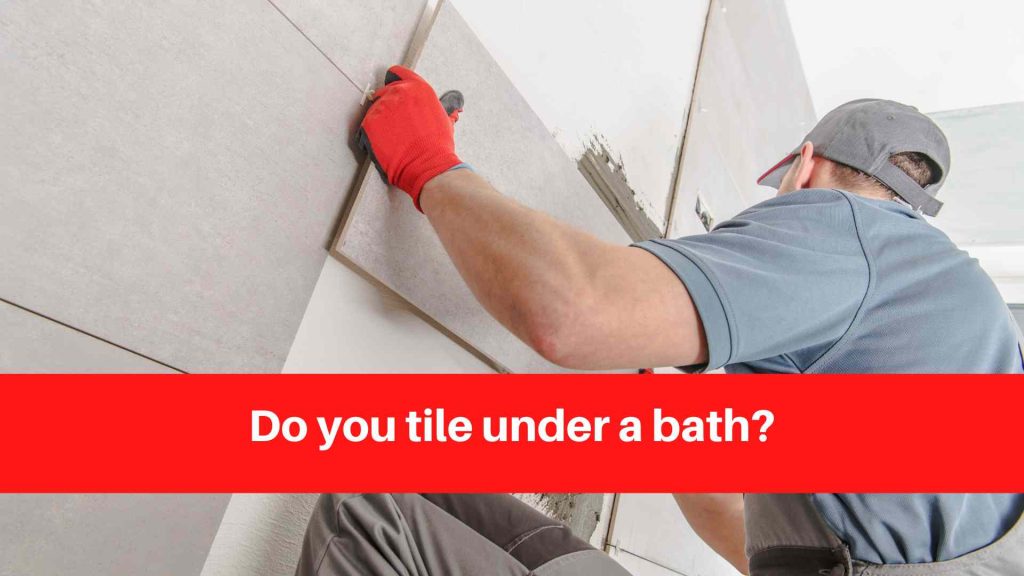Bath Installation Options: To Tile or Not to Tile?
Are you planning a bathroom remodel and debating whether or not to tile beneath your bathtub? The answer is that it depends on what kind of tub you have. It’s best not to tile beneath a drop-in or alcove tub because it can make things more difficult than necessary.
Tiling beneath a freestanding tub, on the other hand, is an option that can add an extra layer of elegance to your bathroom design. The tiling beneath a beautiful clawfoot tub will always give off that classic vintage vibe we all love.
Consider the type of bathtub you have before making any final decisions about tiling beneath your bath!
The Benefits and Drawbacks of Tiling Around a Bathtub
There are advantages and disadvantages to tiling your bathroom before making a decision. On the plus side, tiling beneath your bathtub can provide a water-resistant, easy-to-clean surface. Tiles can also add a touch of luxury to your bathroom while making it appear larger. On the negative side, tiling can be costly and time-consuming to install. There is also a chance that the tiles will crack or come loose over time. Ultimately, whether or not to tile under your bathtub is a matter of personal preference and budget.
How to Tile Around a Freestanding Bathtub
There are a few things to consider when installing tile around a freestanding tub. Before you begin tiling, make sure the tub is level and support. Mark the center of the drain hole on the underside of the tub once it is in place. This is where you will begin tiling.
If you’re working with pre-cut tiles, start at the center and work your way out. Start by cutting tiles for the two sides of the drain hole if you are cutting them yourself. Install these tiles first, then fill in the gaps with full or cut tiles. Working your way out from the center, ensure that all tiles are level.
It’s critical to use a waterproof sealant around the tub’s edge where it meets the tile. This will aid in the prevention of water damage and mold growth. Apply sealant evenly along the joint with a grout float, then smooth it with a wet finger or sponge. Allow the sealant to completely dry before grouting the tile joints.
Tiling Alternatives for Under a Tub
There are a few alternatives to tiling beneath a bathtub that can achieve a similar look without the hassle or expense of tiling. A tub liner, which is a plastic or acrylic sheet that covers the entire underside of the tub and creates a waterproof barrier, is one option. If you want to avoid the mess and expense of tiling, this is a good option. However, tub liners can be difficult to install and may not last as long as tile.
Waterproof paneling, such as PVC panels or beadboard, is another option. These can be installed directly over the wall studs and provide a waterproof, easily wiped-down surface. If you want an easy-to-clean surface that is resistant to mold and mildew, waterproof paneling is a good choice.
For your tub surround, you could use stone or solid surface material. Granite, marble, and soapstone are long-lasting and waterproof, making them ideal for wet areas like baths and showers. Solid surface materials are more expensive than other options, but with proper care, they will last for many years.
Choosing the right material for your bathroom installation can be difficult, but knowing how each option performs and looks is critical to making an informed decision. It is entirely up to you whether to tile or not, but understanding the pros and cons of both options can help you make the best decision for your home. Consider all of your options before making any decisions – tiling or not – and rest assured that with proper care and maintenance, your bathroom will look fantastic!

